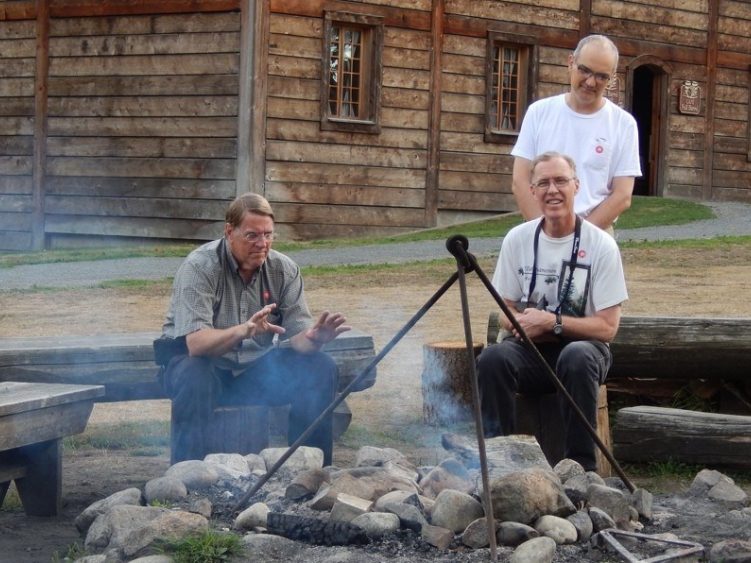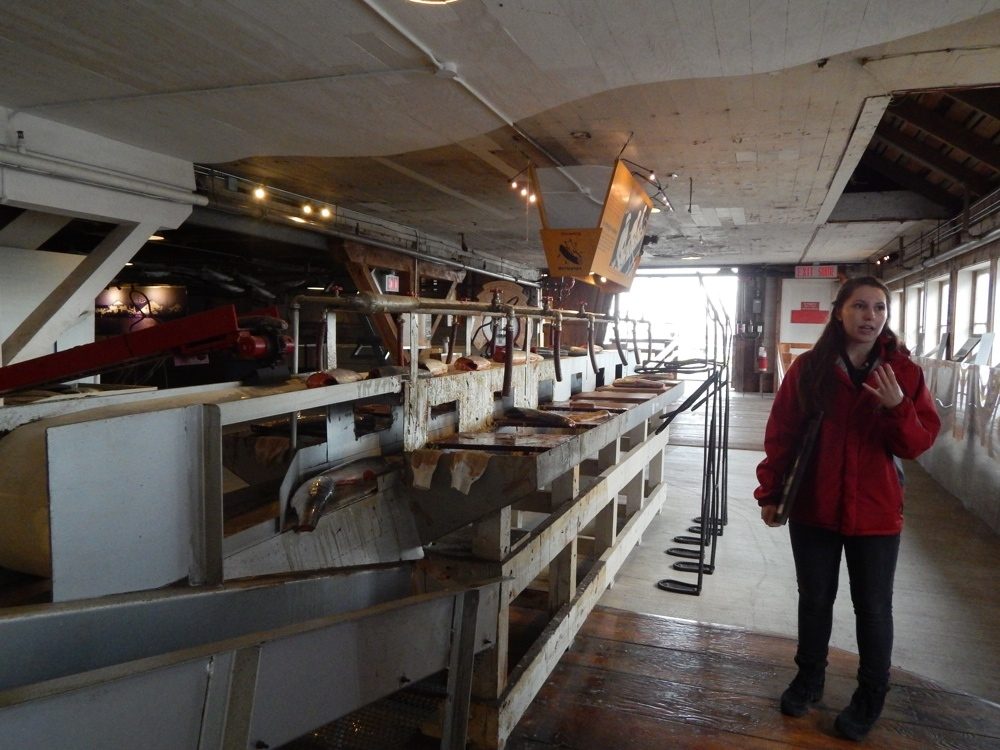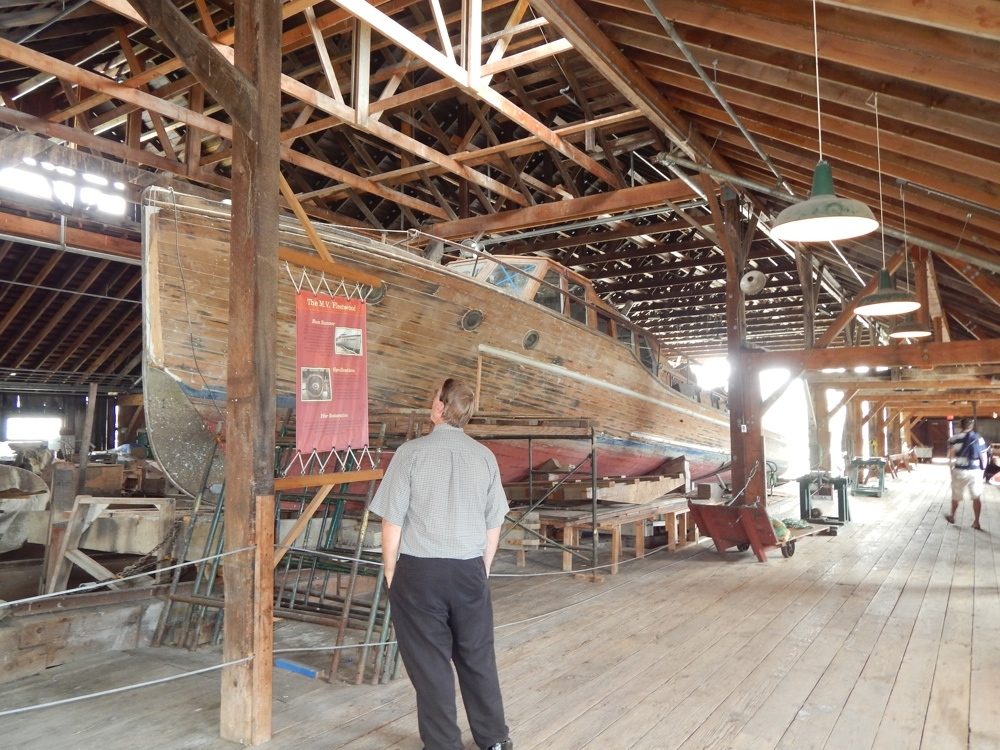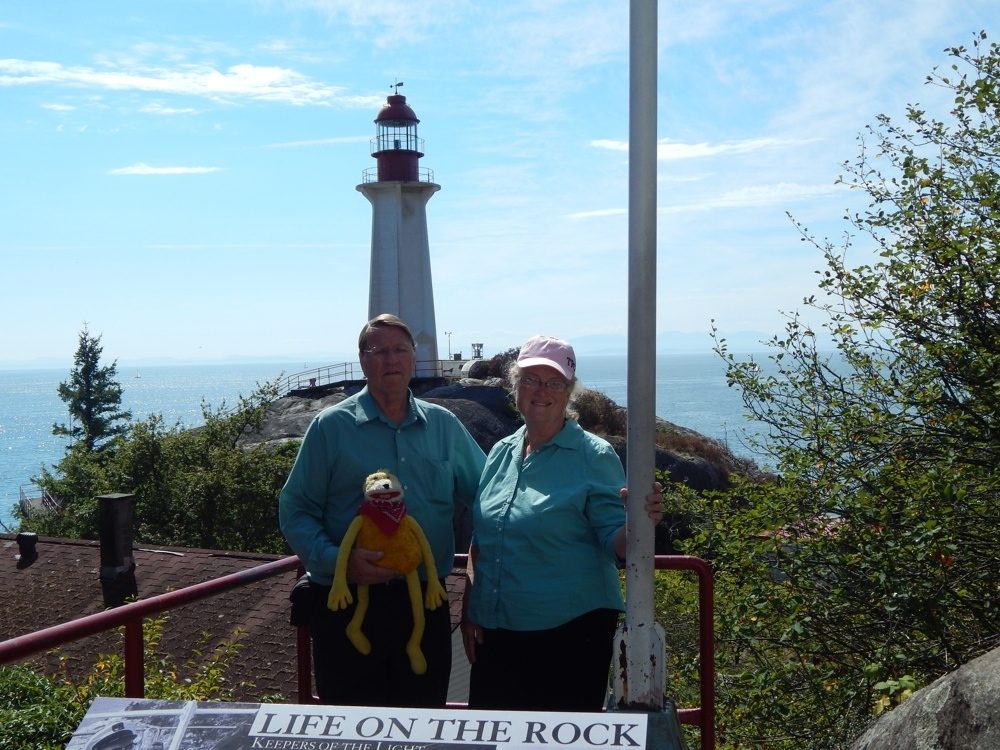
This Must Be Vancouver… but Which One?
Sep 05, 2013 by Bonnie
Did you ever lose track of where you were and what day is was? Trips like this can make that happen! Friday, August 30, we left Victoria (the capital of British Columbia, which is on Vancouver Island, confusing matters) by ferry from Swartz Bay, and crossed over to Vancouver (city) via the port at Tsuwassen, south of the city, arriving at my brother Jon’s home in south Vancouver in the early afternoon.
We visited with him until Jito got home from work, then we all went to an “ethnic” chicken place for supper. The food was delicious and generically Latin. Then we all went over to their new apartment about ten minutes’ drive away. They had just gotten the key from the landlord, and aren’t planning on moving in until around September 15th. So they were happy for us to use it while we were there. There was no furniture, but it was nice to have our own bathroom and SHOWERS!! I splurged and took a nice long tub bath and we caught up on our laundry.




Saturday Jito drove Jon’s car and we all went to Stanley Park in Vancouver. It’s similar in size to Central Park in New York City, but is round instead of long. It took us all day to just drive around it, stopping to see interesting things like Second Beach, the “Laughing Men” sculpture, gardens, Prospect Point, and amazing views of downtown. Jon and Jito were “good” and got crepes for lunch at a pushcart. Art and I were “bad” and got “Vancouver Dogs,” big smoky sausages in huge buns with lots of toppings. They were delicious and I don’t feel a bit guilty!
Sunday we went to an Alliance church near Jon’s new place, for the English service, and enjoyed meeting the church family there. Most of the Alliance churches in that area are Asian, reflecting the large Asian population on the west coast; this one had services in English and Chinese. In the afternoon we all went up to Point Atkinson Lighthouse, which is in West Vancouver, where Jon and Jito used to live. We found a letterbox there, one of a series of lighthouses which I’m collecting. Afterward, we went on to Horseshoe Bay, a lovely harbor and ferry port. We had coffee and muffins in a shop that sits right on the edge of the harbor, before going out on the pier to look at the boats. We also saw a pair of harbor seals playing near the boats. It was a truly lovely spot.




Monday was Labour Day in Canada as well as in the States. We all went out to Fort Langley, which was built by the Hudson Bay Company, one of the early developers of the area through the fish and fur trades, and also a center of the gold rush on the Frasier River! We learned a lot about the early days of British Columbia, and saw the building where the territory was chartered. The docent/guides made our visit very educational and fun. We got to see a blacksmith demonstration, hear about gold panning, and watch a play/reading of the story of one of the pioneers. We also got to see the building where the territory of British Columbia was born. In the same building were two apartments, one of which housed the commander of the fort. The commander’s wife was lonely, because she was the only non-tribal woman in the fort. The Hudson Bay employees were almost exclusively male, and being on the frontier with few ladies in the area, the company encouraged them to marry native women, which worked well in stabilizing relationships with the first nations people. To ease his wife’s loneliness, the commander provided all the comforts he could for her, including fine furniture and china, a piano, and a phonograph. In the china cabinet I saw the cream pitcher pictured above and thought how fitting the inscription to the situation there. If you can’t make it out, here’s what it says: “The loss of gold is much, The loss of health is more, The loss of Christ is such a loss, As no one can restore.” Those were harsh times on the frontier over a hundred years ago. Few people became rich in the gold rush, and many people lost their health. Serious illness, injury and premature death were common. Today we live much easier lives and we are prone to forget the truth that was inscribed on that little pitcher. But it is still true. We work hard to earn the money needed to live comfortably, and we watch our diet and exercise to preserve our health, but in the end, neither wealth nor health can give meaning to life or ensure our happiness. In the end, the only thing that can provide us with purpose, meaning, and hope is our relationship to Christ. When hard times come, He is our rock, our peace, our joy. Were everything else taken from me, He would be enough. I want to live a life that will reflect that truth.




Tuesday Jito had to go back to work, but Jon was still on vacation/sick days, so Art drove the car and Jon directed us to the Gulf of Georgia Cannery, where tons of fish were processed in days gone by. We learned a lot about the early days of the salmon trade, and how the multiethnic labor force was segregated by race and sex, rather similar to the days of the manor house, but the work was much harder and more dangerous! Sixteen hour days and child labor were the rule of the day. Child care was not provided, and children of immigrants (non-citizens) were not allowed to go to school, so mothers carried babies on their backs while working long days on their feet, with their hands in freezing water. Their young children played on the wet, cold, dirty floors in close proximity to dangerous machines. Children as young as eight worked upstairs, loading empty cans onto a conveyer belt for eight hours a day. Workers often lost fingers, and more than a few times, a finger would wind up in a can of salmon! Fortunately, working conditions eventually got better with improved technology and workers’ rights legislation. After seeing the cannery, we went on down the river to the Brittania Heritage Shipyard Park see examples of the workers’ homes and bunkhouses, and to visit some of the ship-building sites.
Wednesday morning we took Jon to one of his follow-up eye appointments, then headed back to the US at Blaine, Washington. Once again, we felt that we had barely scratched the surface, in our visit to Canada. I hope we can go back again. Jon and Jito, thank you very much for a wonderful visit!


